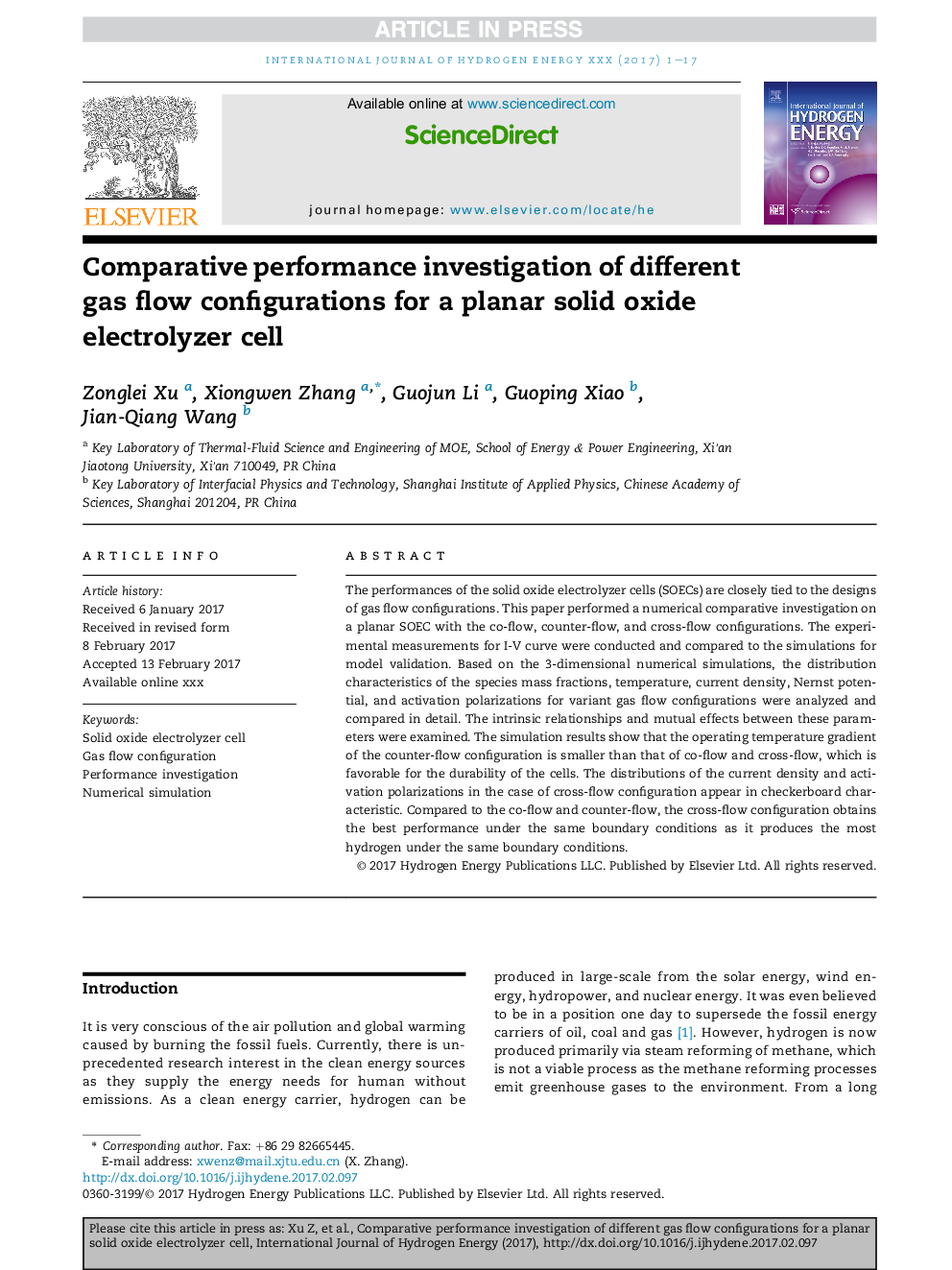| Article ID | Journal | Published Year | Pages | File Type |
|---|---|---|---|---|
| 5145687 | International Journal of Hydrogen Energy | 2017 | 17 Pages |
Abstract
The performances of the solid oxide electrolyzer cells (SOECs) are closely tied to the designs of gas flow configurations. This paper performed a numerical comparative investigation on a planar SOEC with the co-flow, counter-flow, and cross-flow configurations. The experimental measurements for I-V curve were conducted and compared to the simulations for model validation. Based on the 3-dimensional numerical simulations, the distribution characteristics of the species mass fractions, temperature, current density, Nernst potential, and activation polarizations for variant gas flow configurations were analyzed and compared in detail. The intrinsic relationships and mutual effects between these parameters were examined. The simulation results show that the operating temperature gradient of the counter-flow configuration is smaller than that of co-flow and cross-flow, which is favorable for the durability of the cells. The distributions of the current density and activation polarizations in the case of cross-flow configuration appear in checkerboard characteristic. Compared to the co-flow and counter-flow, the cross-flow configuration obtains the best performance under the same boundary conditions as it produces the most hydrogen under the same boundary conditions.
Related Topics
Physical Sciences and Engineering
Chemistry
Electrochemistry
Authors
Zonglei Xu, Xiongwen Zhang, Guojun Li, Guoping Xiao, Jian-Qiang Wang,
